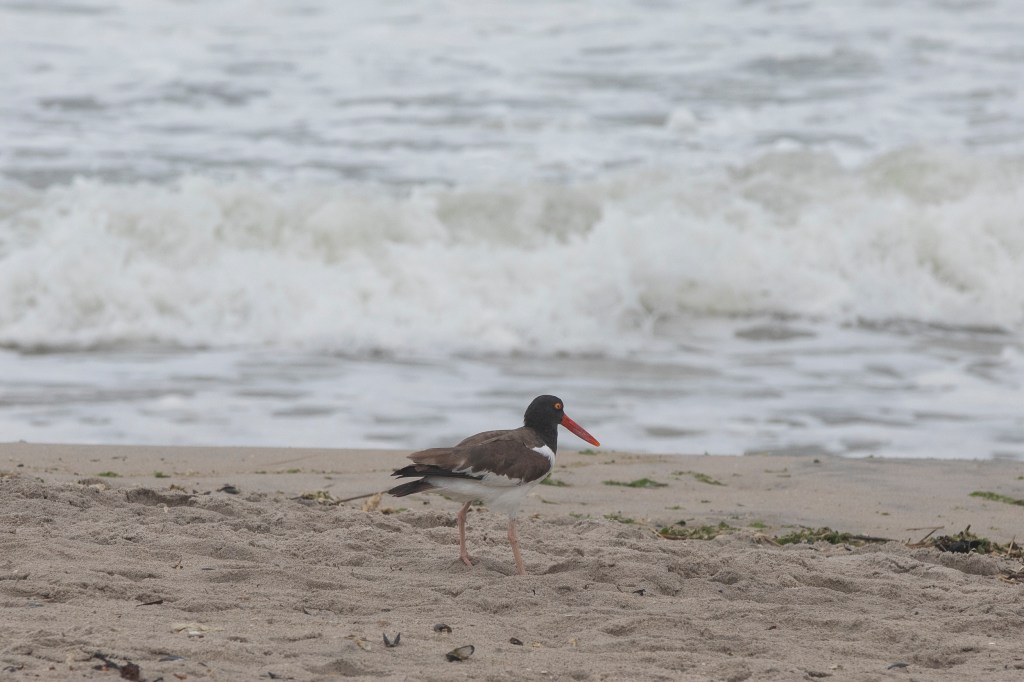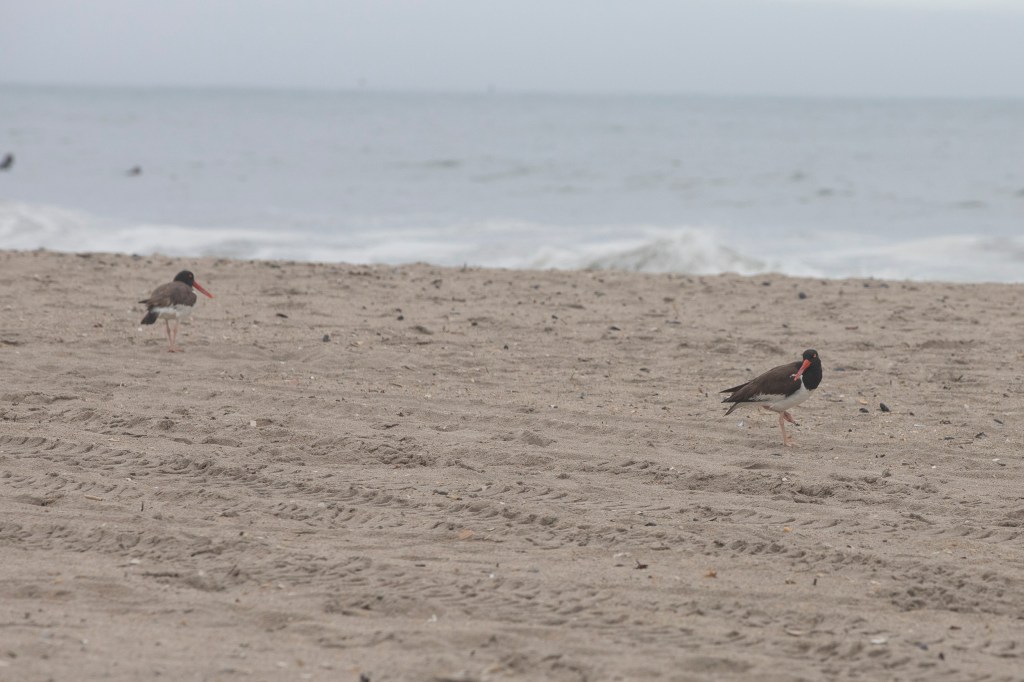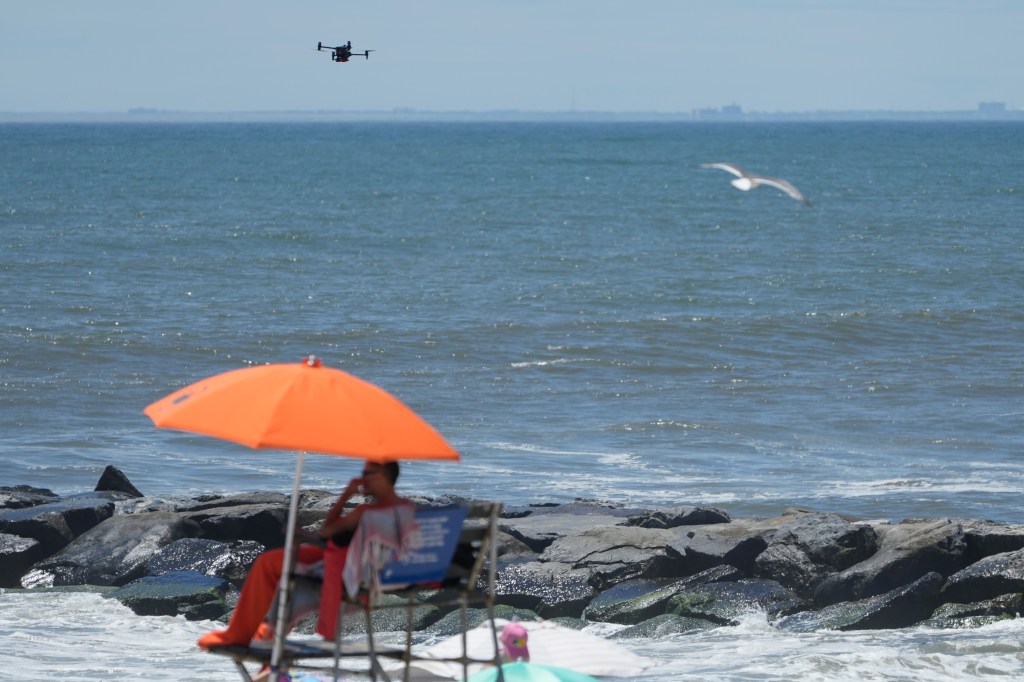Flock off! Angry birds are attacking NYC beach drones that are in the sky to help to save drowning swimmers
Feathers are getting ruffled at Rockaway Beach.
Swarms of aggressive birds have been attacking drones launched by the city to track sharks and save drowning swimmers at the seaside hotspot — forcing emergency teams to change their flight plans.
Long-beaked shorebirds known as American oystercatchers have been swooping down and dive bombing the three-foot gadgets to protect their eggs on the popular Queens shoreline, where the critters nest in the summer months, officials said.
“They will fly at it, they’ll swoop at it, they’ll be vocalizing,” said Veronica Welsh, a wildlife coordinator at the Parks Department. “They think they’re defending their chicks from a predator”
“[They’re] very annoyed by the drones,” she said.
The drones make a loud humming sound that stress out the birds, which are considered a “high conservation concern,” sending them squawking and fleeing from their eggs, according to wildlife experts.
The avian vs. aircraft turf war isn’t gonna fly, according to city officials who adjusted their flight range.
The city’s police, fire and emergency management departments recently rerouted the drones — some of which come equipped with inflatable life rafts for saving swimmers — away from birds nests at the summertime hotspot.
But some beachgoers simply want the birdbrains to flock off.
“The drone helped save someone’s life yesterday from being a victim of a shark attack,” surfer Andrew Thomas, 32, told The Post — referencing a drone that spotted a shark Thursday, prompting a closure at Rockaway beach.
“The more eyes in the water the better,” he said.
“People are drowning left and right. If a drone saves one life, it’s doing the job.”
Others said the sky-high battles tend to break out when the drones get close to the shoreline.
“It’s usually when the drone gets close to land and on a sunny day,” said Doran Edwards, a 40-year-old surfer. “If it’s over the water, they’re not going close to [the drones.]”
On Friday, FDNY Commissioner Laura Kavanagh said the new drone route won’t impact the safety of beach-goers.
“We definitely have enough space on the beach. So as soon as we realized that we might have been close to a habitat …we were able to adjust,” she said when asked about the wildlife clash at an unrelated press conference.
“We’re definitely still able to do our work,” she said.
The black and white birds, which have a distinct orange beak, share habitat with piping plovers, a sand-colored bird that’s federally designated endangered species, wildlife experts said.
“We do know there are birds on this beach that are highly endangered. If they abandon their nests because of the drones, that would be a disaster,” said David Bird, the aptly named professor of wildlife biology at McGill University.
The city’s Emergency Management Department was first to notice the birds were in a flap.
“We pointed out that there’s a nest here and there’s two angry parents who don’t want you anywhere near their eggs or their babies,” said Natalie Grybauskas, Emergency Management Department assistant commissioner.
Officials from that department last month alerted police and fire department drone operators, who changed their flight range.
In total, four people have drowned off city beaches this summer, matching the number of swimming deaths from last year.
When two teenagers disappeared while swimming near Rockaway, the NYPD flew its drones as part of the search mission.
Both bodies eventually washed up on the shoreline.
The fire department’s drones also have captured footage of lifeguards assisting swimmers on Rockaway Beach being swept away by a rip tide.
“NYC Parks is working closely with our beach-drone operating partners at the NYC Department of Emergency Management, the FDNY, and the NYPD to keep beachgoers safe while ensuring that our wildlife has the space and environment to thrive,” a spokesperson for the Parks Department told The Post Friday.
Additional reporting by Craig McCarthy















